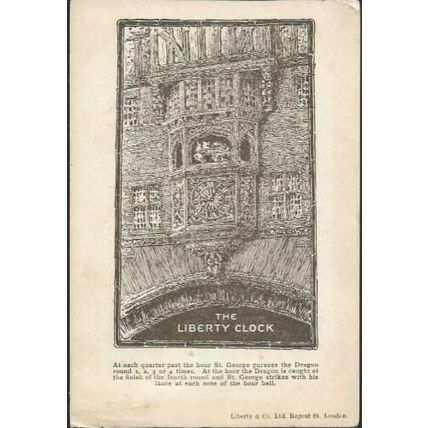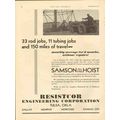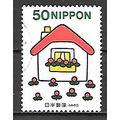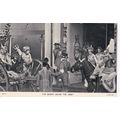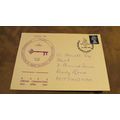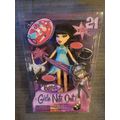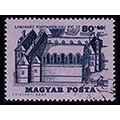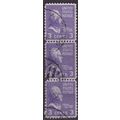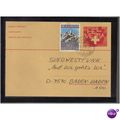London - Liberty (shop) Regent St., clock - nice early 'modern' size card 1929
- Condition : Used
- Dispatch : 2 Days
- Brand : None
- ID# : 203562617
- Quantity : 1 item
- Views : 144
- Location : United Kingdom

- Seller : justthebook (+1699)
- Barcode : None
- Start : Sun 01 Aug 2021 08:04:53 (EDT)
- Close : Run Until Sold
- Remain : Run Until Sold
Checks/Cheques
 for 1 item(s) edit
for 1 item(s) edit
Shipping Calculator
More Listings from This Seller view all
Seller's Description
- Postcard
- Picture / Image: The Liberty Clock [on Liberty's shop on Regents Street, London] with information. Early 'modern' size card
- Publisher: Liberty & Co Ltd.
- Postally used: yes
- Stamp: 2 x half d George V
- Postmark(s): London W1 - Newcastle on Tyne Exhibition slogan
- Sent to: Mrs. M. H. Herrod, 'Bayonne', 10 Arlington Street, Analby Road, Hull
- Notes / condition: NB - early example of a continental or modern size card used in the UK - these did not become widespread until the 1960s
Please ask if you need any other information and I will do the best I can to answer.
Image may be low res for illustrative purposes - if you need a higher definition image then please contact me and I may be able to send one. No cards have been trimmed (unless stated).
------------------------------------------------
Postage & Packing:
Postage and packing charge should be showing for your location (contact if not sure).
No additional charges for more than one postcard. You can buy as many postcards from me as you like and you will just pay the fee above once. Please wait for combined invoice. (If buying postcards with other things such as books, please contact or wait for invoice before paying).
Payment Methods:
UK - PayPal, Cheque (from UK bank) or postal order
Outside UK: PayPal ONLY (unless otherwise stated) please. NO non-UK currency checks or money orders (sorry).
NOTE: All postcards are sent in brand new stiffened envelopes which I have bought for the task. These are specially made to protect postcards and you may be able to re-use them. In addition there are other costs to sending so the above charge is not just for the stamp!
I will give a full refund if you are not fully satisfied with the postcard.
----------------------------------------------
Text from the free encyclopedia WIKIPEDIA may appear below to give a little background information (internal links may not work) :
*************
Liberty, commonly known as Liberty's, is a department store in Great Marlborough Street, in the West End of London. It sells women's, men's and children's clothing, make-up and perfume, jewellery, accessories, furniture and furnishings, stationery and gifts, and is known for its floral and graphic prints. Turnover for 2015 was forecast to be £145 million, up from £132 million in 2014.[1]
Arthur Lasenby Liberty was born in Chesham, Buckinghamshire, in 1843. He was employed by Messrs Farmer and Rogers in Regent Street in 1862, the year of the International Exhibition. By 1874, inspired by his 10 years of service, he decided to start a business of his own, which he did the next year.
With a £2,000 loan from his future father-in-law, he accepted the lease of half a shop at 218a Regent Street with three staff members.
The shop opened during 1875 selling ornaments, fabric and objets d'art from Japan and the East. Within eighteen months, he had repaid the loan and acquired the second half of 218 Regent Street. As the business grew, neighbouring properties were bought and added.[2]
In 1884, he introduced the costume department, directed by Edward William Godwin (1833–86), a distinguished architect and a founding member of The Costume Society. He and Arthur Liberty created in-house apparel to challenge the fashions of Paris.
In 1885, 142–144 Regent Street was acquired and housed the ever-increasing demand for carpets and furniture. The basement was named the Eastern Bazaar, and it was the vending place for what was described as "decorative furnishing objects". He named the property Chesham House, after the place in which he grew up. The store became the most fashionable place to shop in London, and Liberty fabrics were used for both clothing and furnishings. Some of its clientele were exotic,[clarification needed] and included famous Pre-Raphaelite artists.
In November 1885, Liberty brought forty-two villagers from India to stage a living village of Indian artisans. Liberty's specialised in Oriental goods, in particular imported Indian silks, and the aim of the display was to generate both publicity and sales for the store.
During the 1890s, Liberty built strong relationships with many English designers. Many of these designers, including Archibald Knox, practised the artistic styles known as Arts and Crafts and Art Nouveau, and Liberty helped develop Art Nouveau through his encouragement of such designers. The company became associated with this new style, to the extent that in Italy, Art Nouveau became known as the Stile Liberty, after the London shop.
The Tudor revival building was built so that trading could continue while renovations were being completed on the other premises, and in 1924, this store was constructed from the timbers of two ships: HMS Impregnable (formerly HMS Howe) and HMS Hindustan. The frontage on Great Marlborough Street is the same length as the Hindustan. It is a Grade II* listed building.
The emporium was designed by Edwin Thomas Hall and his son, Edwin Stanley Hall. They designed the building at the height of the 1920s fashion for Tudor revival. The shop was engineered around three light wells that formed the main focus of the building. Each of these wells was surrounded by smaller rooms to create a homely feel. Many of the rooms had fireplaces and some still exist.
The architectural historian Nikolaus Pevsner was very critical of the building's architecture, saying: "The scale is wrong, the symmetry is wrong. The proximity to a classical façade put up by the same firm at the same time is wrong, and the goings-on of a store behind such a façade (and below those twisted Tudor chimneys) are wrongest of all".[3]
Arthur Liberty died in 1917, seven years before the completion of his shops.
Listing Information
| Listing Type | Gallery Listing |
| Listing ID# | 203562617 |
| Start Time | Sun 01 Aug 2021 08:04:53 (EDT) |
| Close Time | Run Until Sold |
| Starting Bid | Fixed Price (no bidding) |
| Item Condition | Used |
| Bids | 0 |
| Views | 144 |
| Dispatch Time | 2 Days |
| Quantity | 1 |
| Location | United Kingdom |
| Auto Extend | No |


